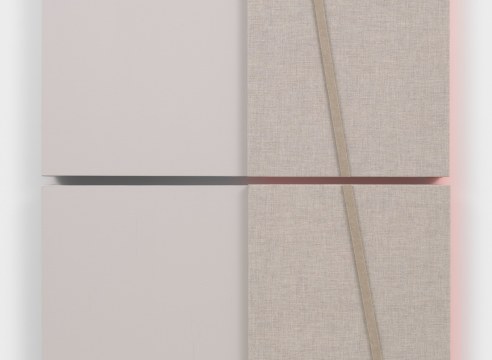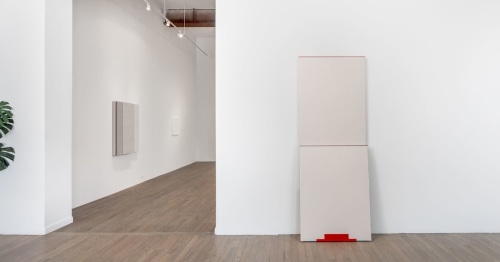

Installation view: Nocturnes, Patron Gallery, 2022
Jennie C. Jones's one-person exhibition Jennie C. Jones: Nocturnes at Patron Gallery, Chicago, IL.
Patron Gallery's press release follows:
PATRON is proud to present our second solo exhibition with artist Jennie C. Jones. The exhibition titled Nocturnes opens to the public Saturday, June 4, 2022 and continues through July 16, 2022.
Jennie C. Jones: Nocturnes
To color my hearing, to strengthen my ear drum
To color my hearing, to stretch my drum into a hum
The predominance of the eye over ear.
The mind’s eye, the mind’s ear…
A generosity in a refusal.
And here we begin at night. Black is the abundance of color, the concentration of color, the dense vibration of everything all at once. For her second solo exhibition with PATRON, Jennie C. Jones’ exhibition Nocturnes presents paintings and works on paper that extend key tenets from her recent solo show at the Solomon R. Guggenheim Museum. Nocturnes is a term she employs both to refer to a music composition evocative of night (a notable example being Felix Mendelssohn’s Nocturne from A Midsummer Night’s Dream (1848)), as well as to the history of painting depicting landscapes at night, such as J.M.W Turner, Fishermen at Sea (1796), or Edwin Landseer, Scene from A Midsummer Night’s Dream. Titania and Bottom (1851).
Jennie C. Jones’ approach to painting combines the historic and aesthetic expressions of Minimalism and abstraction. Materials such as acoustic panels and architectural felt point to the capacity for painting to create aural environments. She layers and melds these materials often used for sound proofing recording studios and constructing instruments to not only become signifiers for sound, but also actively engage with and challenge the viewer. She asks them not only to look at a painting, but to listen to it. On approaching these works, even one’s breath as they near the surface of the composition becomes dampened, muted. Each swath of fiber operates like a confident brushstroke. She pares down color palettes to nearly monochromatic fields of seductive grays, moody blacks, subtly off-white tones replete with quiet pinks and taupe lavenders, and at times mercurial reds. Sharing a deep kinship with the formal “economy of means” imbued by the work of Agnes Martin, Jones’ work keys into the sentiment “the value of art is in the observer.” The restraint offered by minimalist conventions allows the work to become a mirror of self-perception.